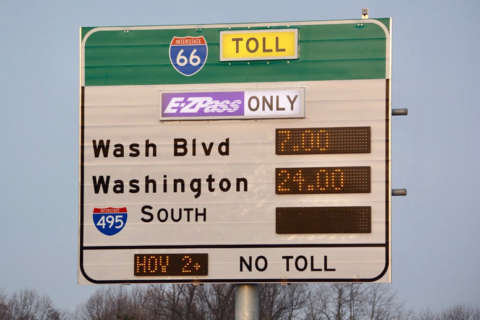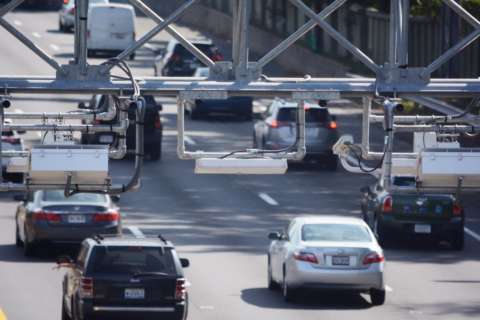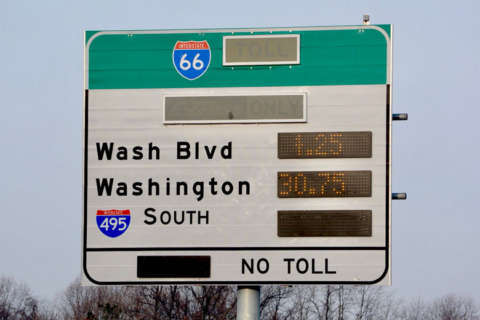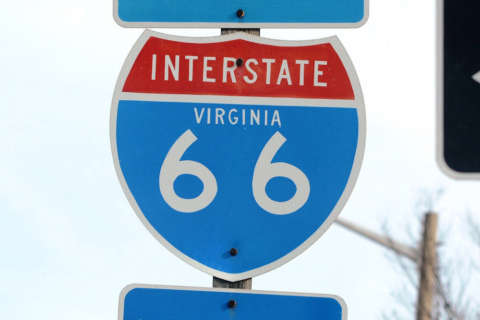WASHINGTON — Virginia has no plans for any immediate changes to the tolling algorithm or new hours on Interstate 66 inside the Beltway, and the system is operating as expected, the state’s transportation secretary said.
“If we don’t get the tolling right, all we’re going to do is clog up those lanes again, and so that’s why the algorithm is multifaceted. It may change, we’ll study it. But in terms of moving traffic, it looks like it’s doing its job,” Aubrey Layne said.
The state expects to review the algorithm that raises and lowers tolls for solo drivers in the rush-hour direction about one month and three months into the tolling that began Monday.
“We’ve got to be very cautious, but we will look at it. And to the extent we can make adjustments and get more throughput, we will do it,” Layne said. “It appears, from a traffic perspective, the algorithm is pretty close.”
Layne would be open to lowering the target speed to 45 mph to lower tolls.
At the height of the morning rush hour, tolls rose as high as $40, as commuters worked out their options for traveling the new road. Before this week, solo drivers were not permitted on I-66 inside the Beltway unless they drove older hybrid cars or were going to or from Dulles Airport.
Buses and other vehicles traveling for free with an E-ZPass Flex and at least two people in the car were able to go about 20 mph faster than the same time last year during the old restricted hours, Layne said.
“The majority of people are not paying those tolls and also the majority of people, our studies have shown, don’t use the entire 10 miles. So, we’ll go through and take a look and let people see here’s how people are using it and the average they’re paying,” Layne said.
The Virginia Department of Transportation said it did not yet have information on the average toll paid over the four hour eastbound tolling period in the morning or the four hour westbound tolling in the afternoon.
“Right now we only know what was posted. It appears that posting when it gets high enough it makes the traffic say, ‘Oh, nope, not worth it,’ and it keeps that 55 mph,” Layne said.
The two highest tolls, both in the eastbound direction, lasted one six-minute period each.
The average toll actually paid by drivers, including the amount paid for shorter trips that have been as low as 50 cents, should be available next week.
“I know all the publicity is ‘Oh, $40,’ but the whole idea is for the person to make a rational decision. ‘Is it worth [it for] me to pay this to use it or is another method better?’ If you start limiting that, you impact the entire network,” Layne said of requests to cap tolls or make other dramatic changes.
“I wouldn’t pay $40, and that’s the whole point,” Layne said. “Quite frankly, if you don’t want to pay it, it’s pretty simple: put somebody else in your car.”








